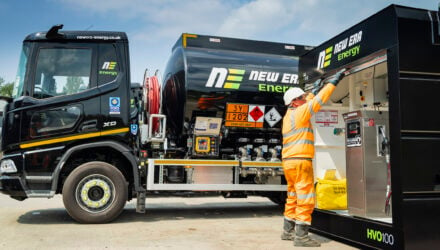Delivery drivers in the UK drop off a parcel every six minutes on average, or 10 parcels an hour. Nearly two-thirds (63%) of delivery drivers in the UK have reported their delivery volume has increased over the last five years.
New research from Scandit, the leader in smart data capture, revealed the changing nature of delivery drivers’ roles and their increased workloads and pressures in recent years. Its Global Delivery Insight – Driver Views from the Last Mile report, which launched today, examined the state of the parcel and post delivery industry according to over 1,200 delivery drivers from 11 countries worldwide.
The increase in volume is intensified by the changing nature of the work, with 68% of UK drivers stating they now have to complete deliveries to different types of drop off points, 67% saying they are now expected to work faster and 65% reporting an increase in new tasks like identity verification at the door.
 “Our research has uncovered a workforce stretched to its limits,” said Samuel Mueller, CEO and co-founder of Scandit. “As delivery companies have innovated and diversified their offerings to meet consumer demand, drivers on the frontline are feeling the pressure of changing roles, increased parcel volumes and high expectations of speedy delivery. The onus is now on delivery companies to deploy the right technology to attract, support, and retain this critical workforce.”
“Our research has uncovered a workforce stretched to its limits,” said Samuel Mueller, CEO and co-founder of Scandit. “As delivery companies have innovated and diversified their offerings to meet consumer demand, drivers on the frontline are feeling the pressure of changing roles, increased parcel volumes and high expectations of speedy delivery. The onus is now on delivery companies to deploy the right technology to attract, support, and retain this critical workforce.”
Globally, the overwhelming majority (82%) of drivers use a smartphone to complete their delivery tasks, including providing proof-of-delivery at the door, age or ID verification, finding parcels at the kerbside and connecting with customers and head office during a shift. Only 16% of delivery drivers rely on a dedicated scanning device and 2% don’t use a device to track deliveries at all. In the UK the use of dedicated devices is more widespread, with 21% of respondents using them as opposed to the 76% who use a smartphone.
Moving around the industry
The high volume and evolving workload is further intensified by staff shortages and retention challenges, with 50% of all drivers stating staff shortages increased during the last five years. The majority of drivers (67%) stated they had changed jobs within the last two years, with 42% of these within the last year. Many of these job changes are within the industry itself as 68% previously had a job in delivery. The research also revealed that 37% juggle delivery with another job – with 7% holding down two or more jobs – and some respondents having seven different roles. This was most notable in the UK, where 41% of drivers identified as gig workers as compared to the 18% average across the rest of Europe.
Despite this fluidity and high turnover, the delivery industry is still appealing to its workforce as 88% of drivers would recommend their current employer. Parcel and post delivery offers flexible working opportunities and it allows them to pursue different careers and activities. For example, 29% of those with more than one role work in administration, 23% work in creative or IT industries and 18% also work in skilled trades such as plumbing and building.
“The delivery industry needs a flexible workforce, significant parts of which are often employed on a gig economy or part-time basis, in order to manage unscheduled or unexpected peaks in demand,” continued Samuel Mueller. “But this workforce is well-versed in the industry, and will actively seek out not only a strong package of salary and benefits, but also flexible working patterns, a company with a strong brand reputation, and crucially the provision of high-performance technology in order to complete their demanding roles.”
The research showed a 49% / 51% split globally between contracted and gig economy/short-term workers. Regardless of their employment status, delivery drivers are looking for five main attributes from their employer. Salary and benefits are clearly important (43% and 27% respectively choosing these as the main reasons for taking a role) with work-life balance also a major factor (40%). 32% will choose a new employer over another based on brand reputation. More than a quarter (26%) take a role in delivery based on the type of technology they are given in order to complete their jobs.
Providing effective technology is therefore critical in order to attract, empower and properly support drivers as they fulfill all aspects of their roles. Smartphones are a familiar device with an intuitive interface, and ideal for gig economy workers where a bring your own device (BYOD) model is often deployed. When equipped with smart data capture, drivers have the ability to manage a wide range of tasks across the entire last mile workflow. The research demonstrated huge opportunities for delivery firms to further enable drivers with additional functionality across all their workflows. 75% of those surveyed do not use their device to aid van loading, 73% don’t use it to find parcels at the kerbside and 67% don’t have ID verification enabled







